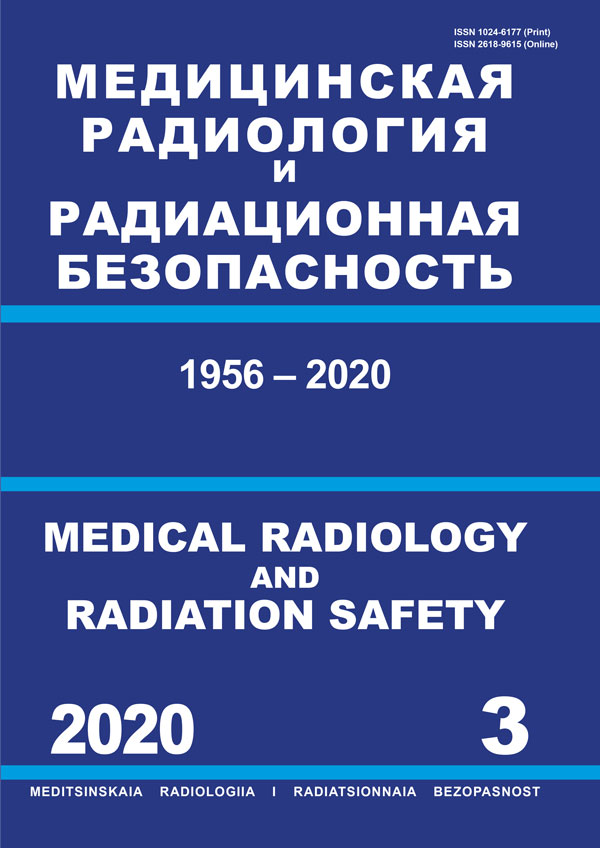Russian Federation
Russian Federation
Russian Federation
Russian Federation
Russian Federation
Russian Federation
Russian Federation
Russian Federation
Russian Federation
Russian Federation
CSCSTI 76.03
CSCSTI 76.33
Russian Classification of Professions by Education 14.04.02
Russian Classification of Professions by Education 31.06.2001
Russian Classification of Professions by Education 31.08.08
Russian Classification of Professions by Education 32.08.12
Russian Library and Bibliographic Classification 51
Russian Library and Bibliographic Classification 534
Russian Trade and Bibliographic Classification 5708
Russian Trade and Bibliographic Classification 5712
Russian Trade and Bibliographic Classification 5734
Russian Trade and Bibliographic Classification 6212
Purpose: To define efficiency and safety of use of the active scanning proton beam in reirradiation of recurrent malignant gliomas. Material and methods: Researched group included 26 patients who were treated on a complex of proton therapy Prometeus. 57.7 % of tumors were glioblastoma, 26.9 % – gliomas of GII and 15.4 % GIII gliomas. Proton therapy was carried out with use of the active scanning beam, image-guiding system and use of the individual fixing devices. To all patients PET/CT with 11C-methionine and MRI were carried out, target volume delineation was carried out by results of coregistration of both images. Results: Terms of observation were from 1 to 32 months. The assessment of direct efficiency is carried out at 19 patients in 3 months after completion of treatment. From the group 52.7 % of patients (n = 10) had disease stabilization. At 11.5 % (n = 3) – partial response. Tumor regression volume varied from 50 to 90 %. Progressing of a disease developed in 31.5 % of the considered cases (n = 6). Other 7 patients expect control inspection. 15.4 % (n = 4) patients developed grade 2 radiodermatitis in the field of radiation fields, the remaining 84.6 % (n = 22) had grade 1 radiodermatitis. Of the entire group of patients, only one case of the development of a late radiation complication in the form of radionecrosis is observed at an observation period of 13 months. Conclusion: Preliminary results of a research showed that performing proton therapy by the active scanning beam is the effective method of treatment of patients with the diagnosed recurrent gliomas, allowing to increase life expectancy of patients with maintaining satisfactory general condition.
proton therapy, gliomas, recurrent, reirradiation, radiation complications
1. Desjardins A, Gromeier M, Herndon JE, Beaubier N, Bolognesi DP, Friedman AH, et al. Recurrent glioblastoma treated with recombinant poliovirus. New Engl. J. Med. 2018;379(2):150-61.
2. Mayer R, Sminia P. Reirradiation tolerance of the human brain. Int J Radiat Oncol Biol Phys. 2008 Apr 1;70(5):1350-60.
3. Langedijk JA. Re-irradiation: new frontiers. Springer, 2011. P. 85-93.
4. NCCN Clinical practice guidelines in oncology. Central nervous system. Version 1.2018. National Comprehensive Cancer Network. 2018.
5. Fogh SE, Andrews DW, Glass J, Curran W, Glass C, Champ C, et al. Hypofractionated stereotactic radiation therapy: an effective therapy for recurrent high-grade gliomas. J Clin Oncol. 2010 Jun 20;28(18):3048-53. DOI:https://doi.org/10.1200/JCO.2009.25.6941.
6. Kong DS, Lee JI, Park K, Kim JH, Lim DH, Nam DH. Efficacy of stereotactic radiosurgery as a salvage treatment for recurrent malignant gliomas. Cancer. 2008 May 1;112(9):2046-51. DOI: 10.1002/ cncr.23402.
7. Klimanov VA, Zabelin MV, Galyautdinova ZhZh. Proton radiation therapy: current state and prospects. Medical Physics. 2017;2:89-96. (Russian).
8. Tsyb AF, Gulidov IA. The current state of radiation therapy of malignant neoplasms. In: Therapeutic Radiologija GEOTAR Publ, 2013. P. 7-12. (Russian).
9. Gulidov IA, Gordon KB, Balakin VE, Galkin VN, Gogolin DV, Kaprin AD, et al. New possibilities for proton therapy in Russia. Problems in Oncology. 2016;62(5):570-2. (Russian).
10. Kohshi K, Yamamoto H, Nakahara A, Katoh T, Takagi M. Fractionated stereotactic radiotherapy using gamma unit after hyperbaric oxygenation on recurrent high-grade gliomas. J Neurooncol. 2007 May;82(3):297-303.
11. Ang KK, Jiang GL, Feng Y, Stephens LC, Tucker SL, Price RE. Extent and kinetics of recovery of occult spinal cord injury. Int J Radiat Oncol Biol Phys. 2001 Jul 15;50(4):1013-20.
12. Kobyakov GL, Smolin AV, Bekyashev AKh, Absalyamova OV, Kobyakova EA, Poddubsky AA, Inozemtseva MV. Treatment for recurrent glioblastoma: are there successes? Head and Neck Tumors. 2014.36:12-21. (Russian).
13. Galle J, McDonald M, Simoneaux V, Buchsbaum JC. Reirradiation with proton therapy for recurrent gliomas. Int J Particle Ther. 2015;2(1):11-8.
14. Leonie M, Harald O, Gudrun I. Basics of radiation protection for everyday use: how to achieve ALARA: working tips and guidelines. Geneva: World Health Organization. 2004: 83.
15. Kaprin AD, Galkin VN, Zhavoronkov LP, Ivanov VK, et al. Synthesis of fundamental and applied research in the basis for ensuring a high level of scientific results and their introduction into medical practice. Radiation and Risk. 2017;26(2):26-40. (Russian).





